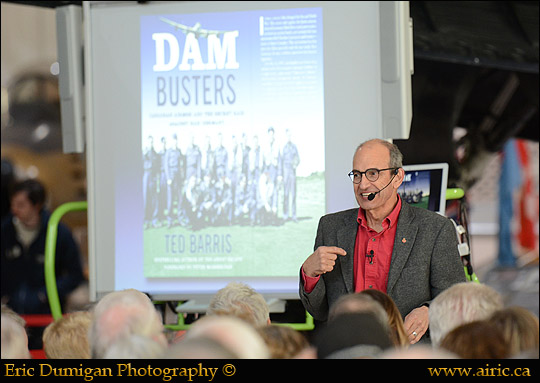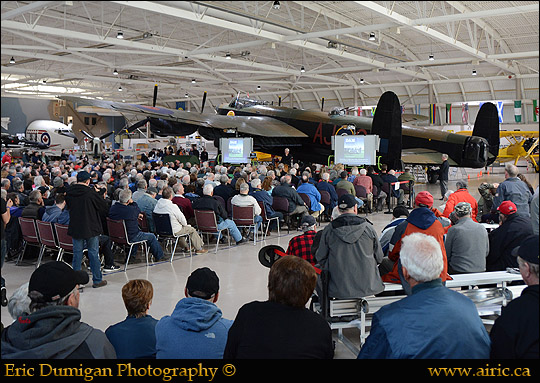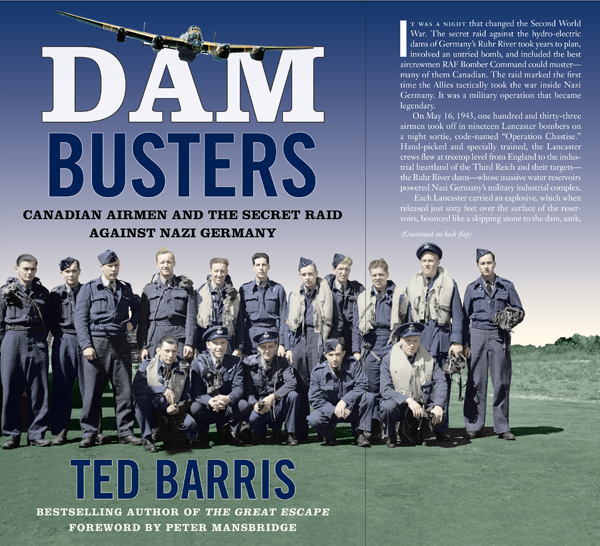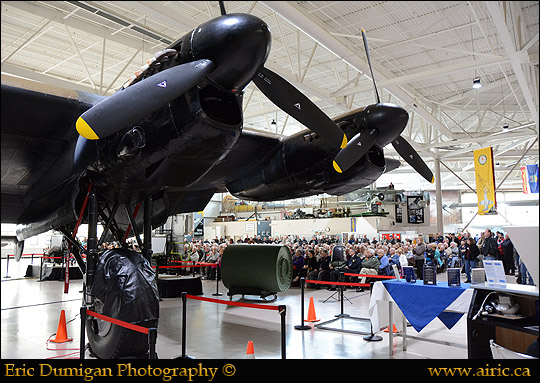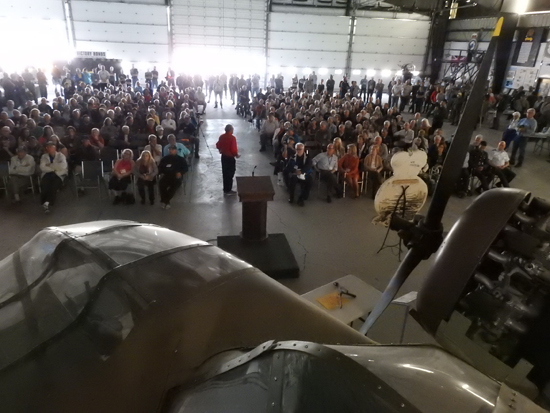
It seemed all the world came to Nanton, Alberta, on the August 24-25, 2018 weekend. This small southern Alberta town – home to about 2,000 people under normal circumstances – played host to a special late summer event. People travelled from across Canada and the U.S. to attend the 75th anniversary commemoration of Bomber Command’s famous Dam Buster raid of 1943.
“They breached the dams,” author Ted Barris said, “and turned the tide of the Second World War.”

HarperCollins publishers and author Ted Barris joined the Bomber Command Museum of Canada, at Nanton, in a pre-publication date launch of Dam Busters: Canadian Airmen and the Secret Raid Against Nazi Germany, Ted Barris’s 18th non-fiction book. The official publication date is Sept. 11, 2018.
In addition to regular patrons of the museum, event organizers managed to attract the members of families representing 16 of the 30 Canadians who participated in the famous raid on the Ruhr River dams on May 16-17, 1943.
In the Second World War, when Nazi Germany threatened the very existence of Britain, the Royal Air Force called on its military aviators, and thousands more from around the Commonwealth, to take the war to its enemies. Under Air Chief Marshal Sir Arthur Harris, Bomber Command often put a thousand aircraft per night in the air against Nazi targets. More than 55,000 aircrew died in those actions, 10,000 of them Canadians. Perhaps the most daring bombing attack happened after weeks of secret training of the Lancaster crews to conduct a low-level raid on the Möhne, Eder and Sorpe dams; the crews breached the first two dams, damaged the third, and crippled production in the Ruhr valley substantially. But the cost was dear; 53 of the 133 airmen died in the raid.
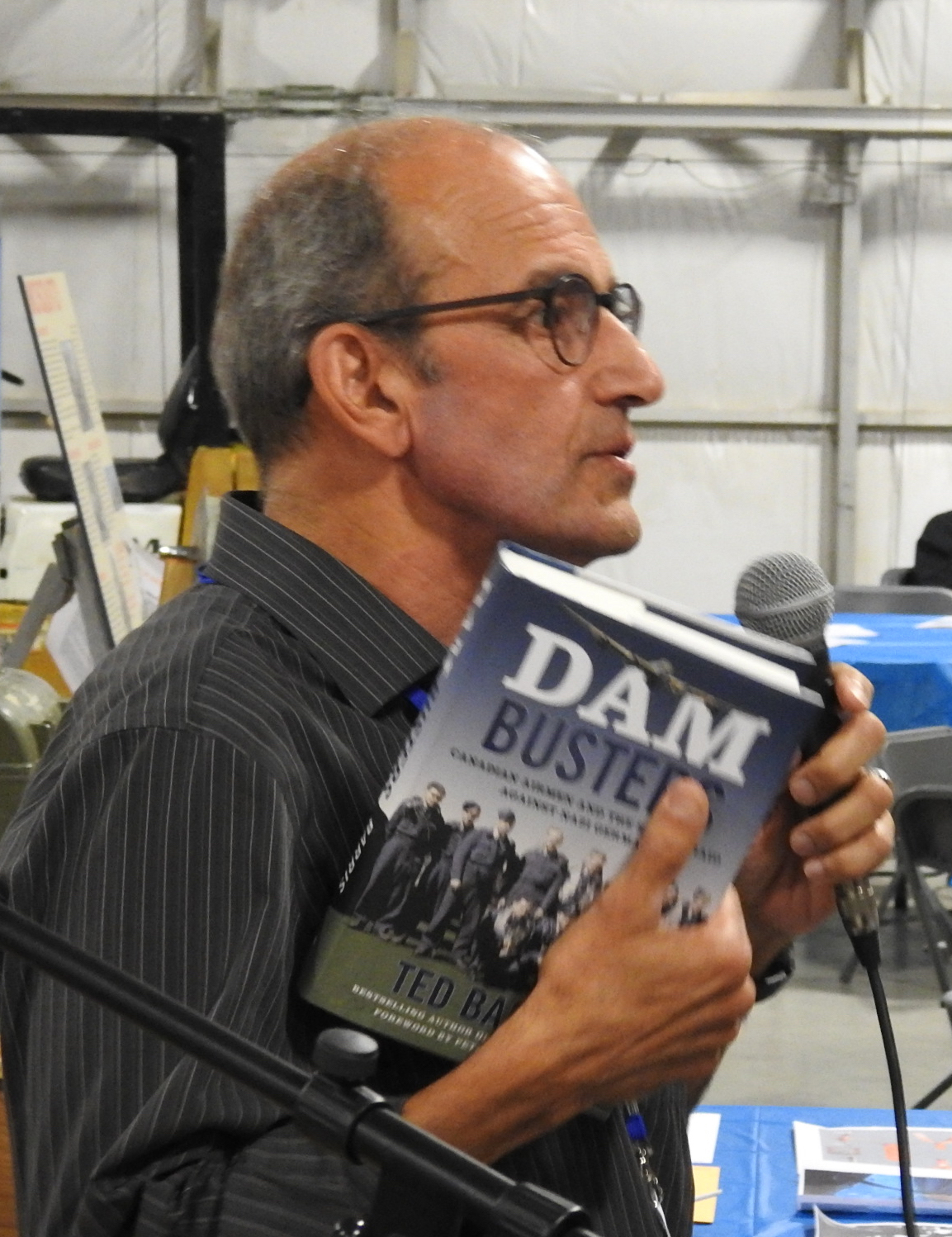
On Friday night, the BCMC hosted a meet-and-greet with just the 50-or-so members of the families of the Canadian airmen who participated in the raid. Nearly half of the 30 Canadians who flew from England that night, did not survive this hi-risk mission. Barris spoke to the families at the Friday social, applauding their commitment to come from so far to pay tribute to their fathers, uncles or grandfathers who’d served in Operation Chastise, which unleashed the famous bouncing bomb against the hydo-electirc dams of industrialized Nazi Germany.
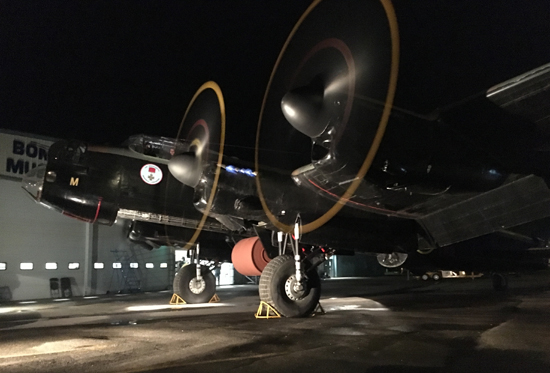
That evening members of the BCMC Lancaster crew brought out their prized Ian Bazelgette Memorial Lanc (altered temporarily to show the markings of one of the Dam Buster bombers – AJ-M). The crew not only fired up the Lancs Merlin engines, but spun a replica Upkeep bouncing bomb in the Lancs belly complete with aldis-lamp attitude lamps, while 200 museum visitors watched.
On Saturday afternoon, Barris presented a 70-minute talk/presentation to walk the audience – about 700 visitors in the BCMC hangar – through the details of the dams raid, but more importantly to tell the stories of the Canadian airmen who took part. With a number of Air Force personnel in the audience as well, Barris made sure nobody left the room without knowing just how powerful the Canadian role in the attack had been; he mimicked a line in the 1955 movie The Dam Busters, in which a British RAF officer notes in preparation for the raid, “We mustn’t forget the English.”
Barris pointed out emphatically, “No. We mustn’t forget the Canadians!”
